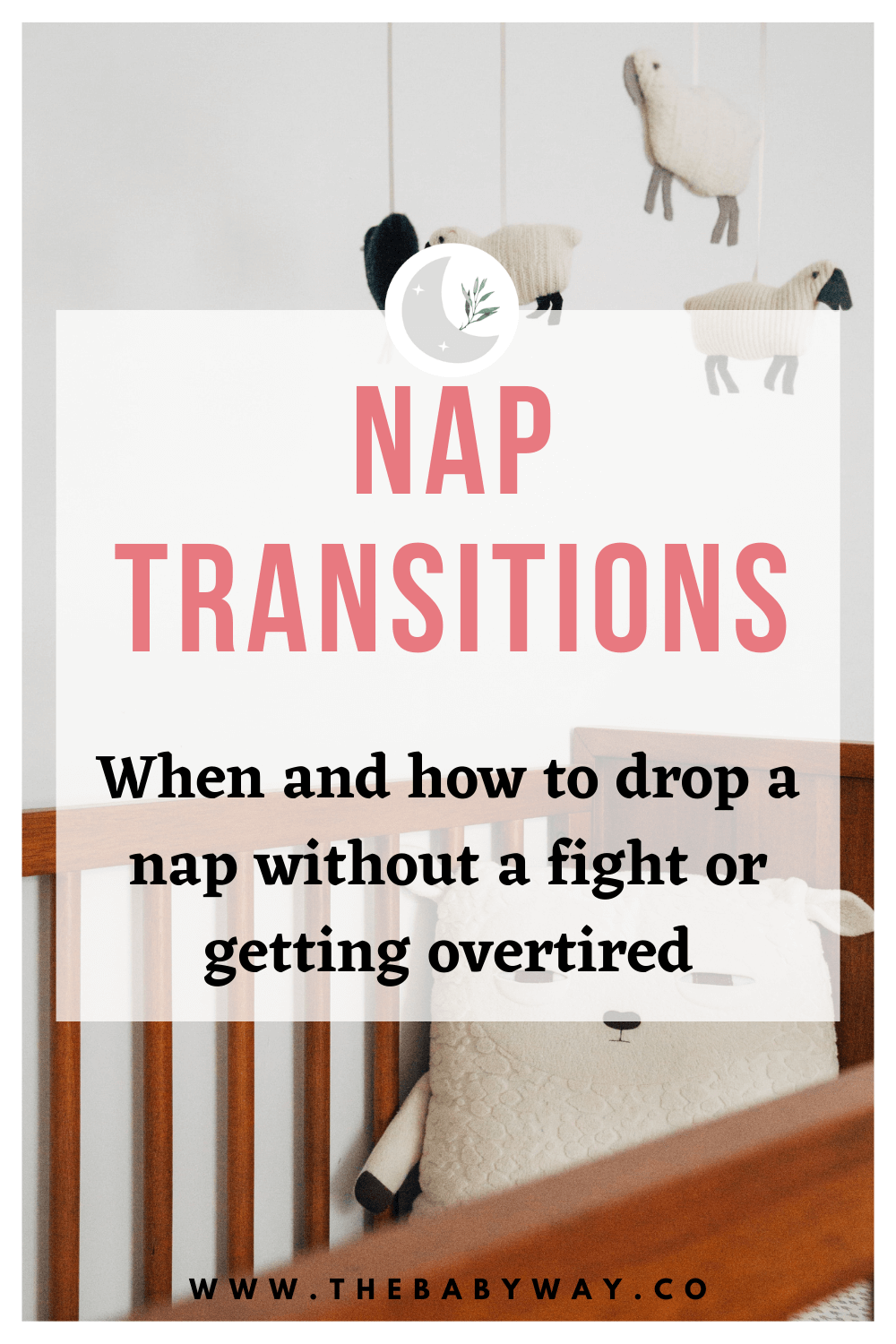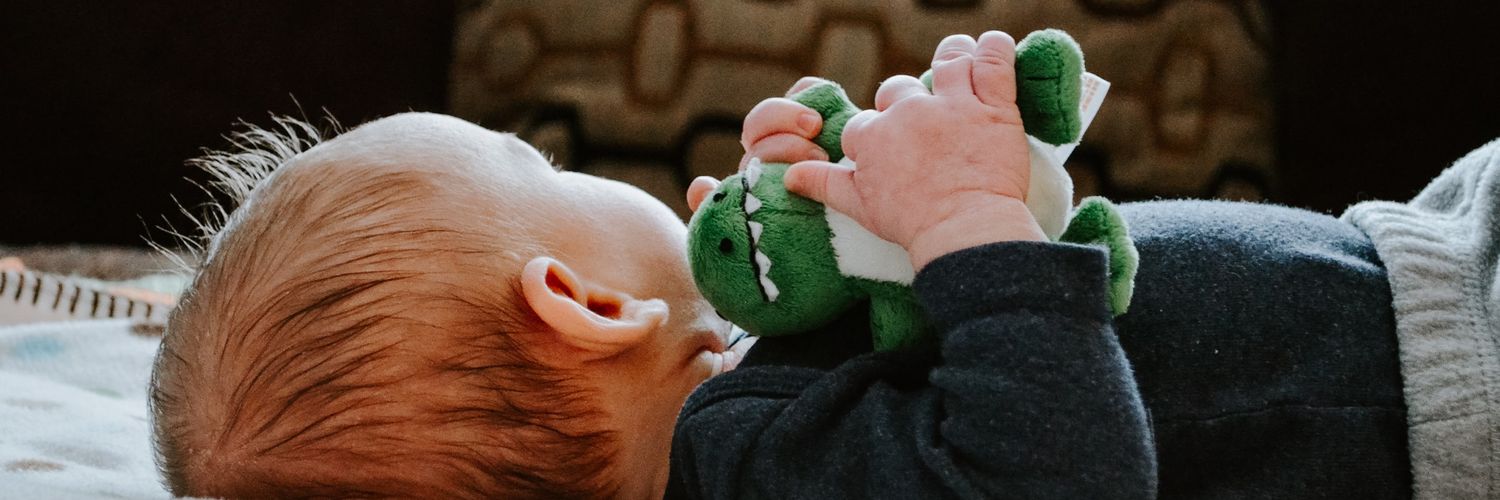You may be at a point where you think your little one might be ready to drop a nap. But you are unsure how to tackle a nap transition. Here are some great tips on making a nap transition as smooth as possible.
You thought you had it all figured out - naps and the science behind them. Your baby has finally created some kind of regular sleeping pattern. You can predict when they are going to nap and schedule your appointments around them. Because you know...
RESPECT THE NAP!
But then suddenly it happens. Your little one doesn't seem so sleepy anymore. They start to fight their naps, leaving you with a daily nap strike. They take a long time to fall asleep, and your usual nap schedule is all over the place again.
And not just that. Nighttime sleep seems to be more disrupted, too. Your baby has increasingly early morning wakes. Day sleep is nothing what it used to be.
So a scary thought crosses your mind.
Is my baby ready to drop a nap?
While you are still mourning the soon loss of your precious free time, you think about how to manage this nap transition. Because nap transitions don't happen from one day to another. They are a gradual process, sometimes going quite smoothly. But sometimes, it's a struggle filled with nap battles, overtired babies, emotionally unstable toddlers, and frustrated parents.
So in this article, we want to give you some useful tips on making a nap transition as easy as possible for your little one. Skipping a nap is a big thing. Your baby or toddler is now awake for a much bigger wake window. And sometimes, handling that is a challenge not just for you but also for them.
Typical age ranges for nap transitions
Before we talk about different strategies for nap transitions, let's take a closer look at when children are usually dropping naps and when the first signs of an upcoming nap transition are showing.
Remember that even if your little one is showing some signs of a nap transition, it doesn't mean they can skip the nap altogether. Most likely, they will first start to fight the nap, or naptime will get delayed. Then they will only need it every other day, depending on their activities and how much their sensory cup has been filled.
2 months: Signs of an upcoming nap transition
Your baby is slowly dropping the newborn sleep behavior where they practically fall asleep every 30-45 minutes. You will notice how they get more interested in their surroundings and start to look around. Signs of a nap transition like fighting a nap are not so evident during this age because your little one still needs a lot of sleep. You will just notice how they slowly become a little person.
3/4 months: 4 to 3 naps
Until 3 months, naps don't necessarily have a real pattern. Naps are probably distributed evenly over the day. After 3 months, most babies have a regular nap pattern of 3 naps, the morning nap, the lunch nap, and a short afternoon nap. Naps are more or less equally distributed over the day. The wake time simply increases as your little one is now leaving the newborn phase and is able to stay awake a little bit longer between naps.
6/7 months: Signs of an upcoming nap transition
You will now notice the first real signs of a nap transition. Your baby is probably taking a longer time to fall asleep for the afternoon nap even though they seem tired. Bedtime also slowly gets delayed.
8/9 months: 3 to 2 naps
Until now, most babies have 3 naps a day. Between 8 and 9 months, babies start to increase the length of the last wake window leading to bedtime. They will drop the last nap of the day.
11/12 months: Signs of an upcoming nap transition
Fighting naps will now start. Your baby is mobile. Your baby is interested in activities. And your baby looses interest in napping in the morning. The world is just too exciting. They might show with crying that they don't want to take that morning nap anymore.
13/14 months: 2 to 1 nap
Most babies are now ready to switch to one single nap. The lunch nap is now the only nap left.
2 years: Signs of an upcoming nap transition
Ok, now you are dealing with the real thing: a toddler. If they fight the nap, they will fight it like a champ. Tantrums and crying are very common.
2 1/2 - 3 year: 1 to 0 naps
Starting at 2 1/2 years, some toddlers will skip the lunch nap. At 3 1/2 years, most children have dropped the last nap.
Tips for an easy and smooth nap transition
Now we will discuss what to do once you notice the first signs of an upcoming nap transition.
As mentioned earlier, the transition is not happening the next day. It is a gradual process you have to take on delicately.
1. Embrace the nap transition
It's not easy to let go of a nap. Believe me, I know. But accept that the transition will soon happen. It is only natural that your little one will need less daytime sleep with growing age. Your baby will also probably not nap the same way they used to before, and you may even need to wake them to prepare them for the transition. Don't fight for naps the way your baby fights to take the naps. Just make necessary naps happen any way possible. The goal is to prevent an overtired baby.
2. Let them sleep anywhere
Depending on your baby's age, your baby will more or less fight the nap. The older the baby, the harder it will be for you to convince them to sleep midday. But your little one will also still need that nap to make it through the next wake window. Otherwise, they will get overtired. While it makes sense for long naps to stay at home and let your baby sleep in their crib in an ideal sleep environment, this is not necessary when your little one is about to drop the nap in a few weeks. Nap time at home is not so crucial any more. Let them sleep anywhere. The goal is simply to get them to sleep. Naps on the go are the easiest, e.g., in the car or stroller. The movement will help your baby fall asleep, and you don't have to face another nap fight. Don't worry about creating any sleep associations. For the remaining naps, you can still stay at home (if that's what you want).
3. Wake your baby from the nap
Some babies will naturally have a shorter nap before they drop it. They are more sensitive to surrounding noises because of low sleep pressure and wake automatically after the first sleep cycle. This especially happens in the afternoon and sometimes with the morning nap (if it is not too close to lunch). To help your baby's body get used to sleeping less during this time of the day, it will be helpful to wake your baby from their nap. You also prevent delaying all the following naps and keep an early bedtime. During a nap transition, even a short nap of 15-20 minutes is often enough to regain energy until the next nap. So even if it feels mean, it will benefit your baby to wake them from the nap.
4. Let them nap every other day
During a nap transition, nap days will come and go. Depending on your activities and how much your baby's sensory cup is filled, it is ok to skip the nap for a few days. Don't force your baby to sleep. It is okay if they take the nap every other day or every few days. If you sense your baby has accumulated some shortage of sleep, have a nap on the go to get in that missed out sleep.
5. Bring bedtime or the following nap forward
When your baby has skipped or dropped the nap, it can be helpful to bring the time of the next nap forward or have an earlier bedtime. Your child still has to get used to the new wake windows, which can take some time. You can then slightly push back bedtime when you notice that your little one can handle the longer wake window. The goal is to prevent overtiredness during the transition process, which can have a huge effect on your baby's or toddler's mood.
6. Keep a routine and a flexible schedule
When you already have a flexible schedule, it will be easier for you to spot the next nap transition. If your day already has a familiar structure, your baby will know when naptime is approaching. A nap routine will help your baby settle easier for naps in general. You can also better keep an eye on wake windows and figure out the time of the next nap. But during nap transition, it is also important to stay flexible. Your baby's sleep needs are changing, and so is your nap schedule. Weak it here and there until you find your new routine that works.
7. Introduce quiet time
Sometimes it's rough for children to stay awake for longer than they are used to. But they also don't want to nap anymore. In that case, introduce quiet time. It is a time when your little one has the chance to rest a little bit and do more calming activities such as reading books or coloring. Sometimes children will even fall asleep during quiet time. My pro tip is to snack an apple together once quiet time is over. Apples are great energy boosters.
Every nap transition is different. Dropping naps in the late afternoon, for example, is usually relatively easy. Dropping the last daytime nap can be more of a challenge because staying awake for the whole day can be really exhausting for your toddler. Try to take it day by day and understand your child's sleep needs (which again may vary from day to day). Don't be too rigid with your schedule, and don't try to force sleep on your child. A transition usually only lasts for 2-4 weeks, and in no time, you have found your new routine.









